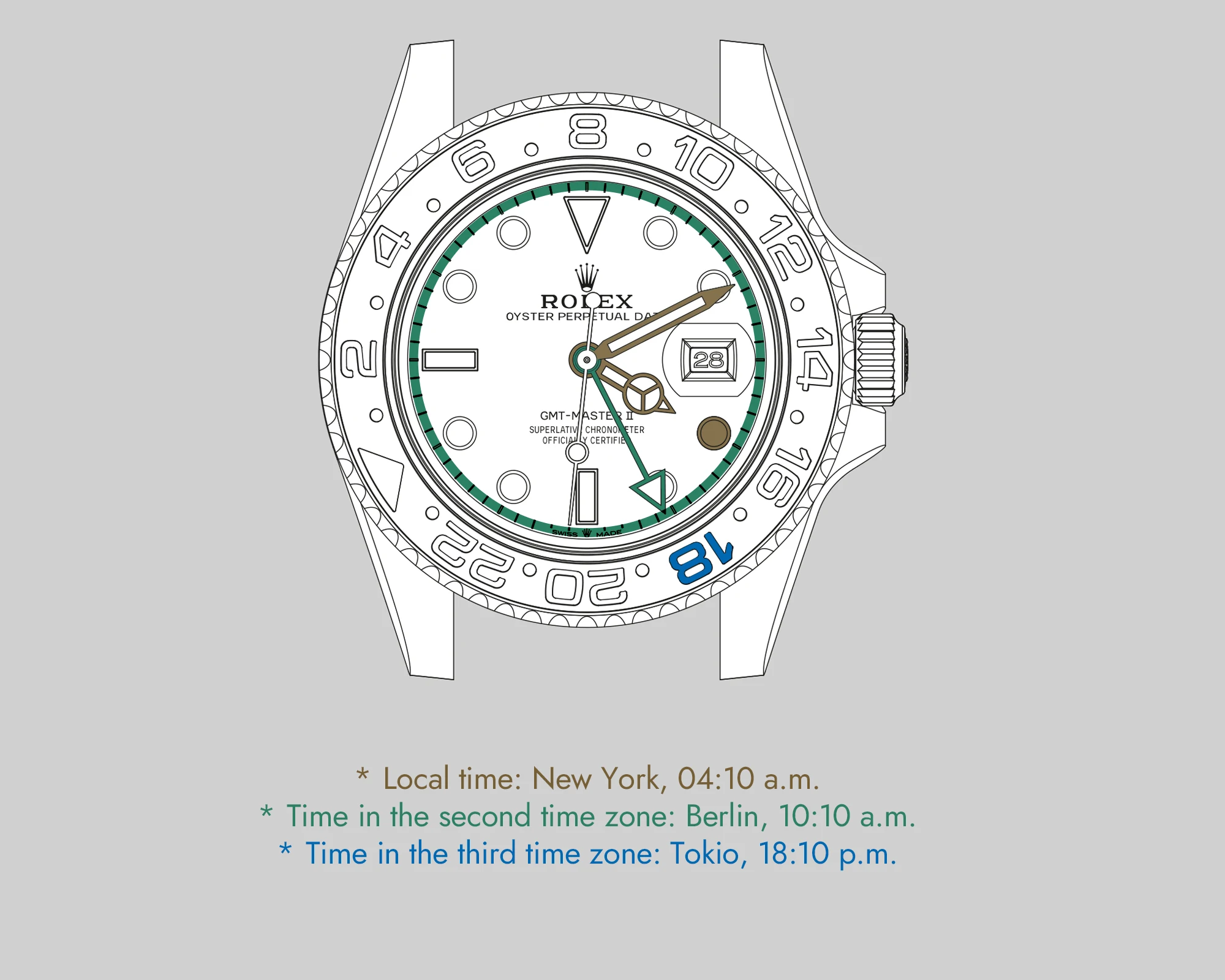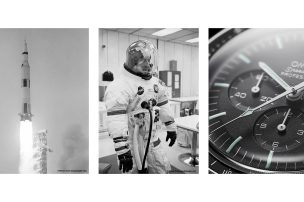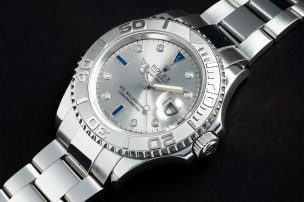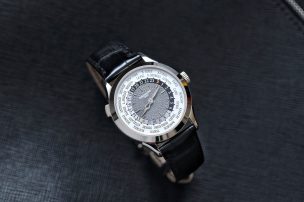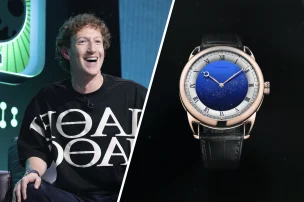
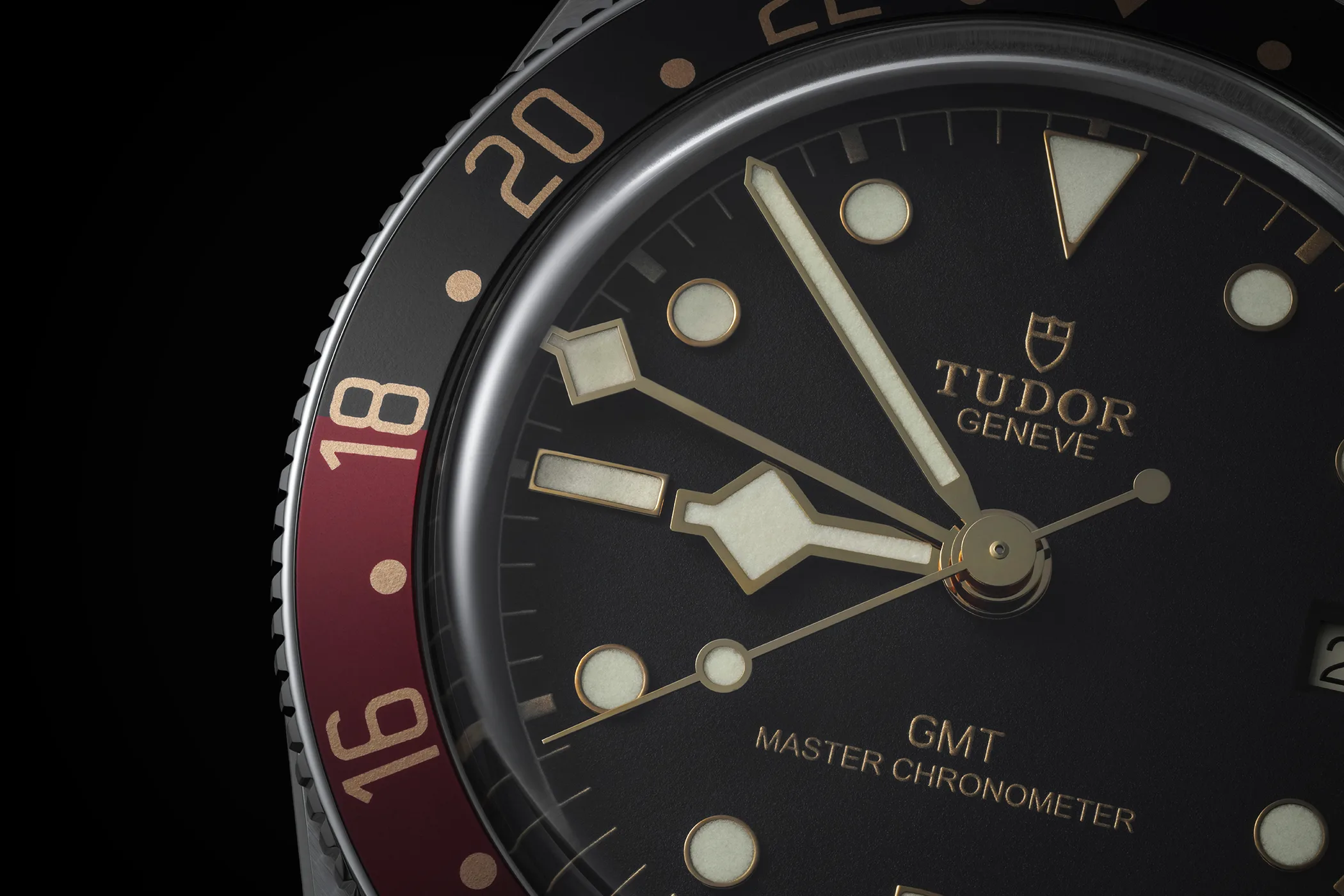
What is a GMT watch and how does it work?
GMT watches are ideal for people who regularly work with different time zones or travel frequently. They allow you to keep track of up to two additional time zones alongside the local time – a practical companion for businesspeople, frequent flyers, and globe-trotters. But how did GMT watches come by their world-famous name, how do they work, and what is the difference between ‘Office’ and ‘Traveller’ GMT watches? In this article, you will learn everything about the origins, functionality, and various types of these versatile watches.
What does GMT (Greenwich Mean Time) actually mean?
GMT, or Greenwich Mean Time, is a term that is familiar to all of us – but why? To put it romantically, Greenwich is the place where the world is divided in two. It is here, in this suburb of London with almost a rural idyll, that the Prime Meridian is situated, having been chosen at the Meridian Conference in 1884 by 25 representatives from different nations. Between 1884 and 1928, it served as the starting point for the division of time zones, with all local times around the world being based on it. The Prime Meridian divides the Earth into the Eastern and Western Hemispheres and runs vertically from the North Pole to the South Pole, intersecting the Equator. However, the fact that Greenwich was chosen as the reference point for time calculation was less of a coincidence and more of a political decision.

In the year of the Meridian Conference, London, then the centre of a vast empire and a significant trading power, was one of the axes around which the fate of the world revolved. The rise of the railway and telegraphy highlighted how confusing it was to approach the division of time differently from country to country, and sometimes even from region to region. It became clear: a global standard for local times was needed. Greenwich, as the starting point for the international Prime Meridian (previously used in navigation) now allowed the Earth to be divided into 24 time zones, each covering 15 degrees of longitude, with neighbouring time zones differing by one hour. The exact location of the Prime Meridian within Greenwich, at the Royal Observatory, was no coincidence. The time measured there became the global standard time, GMT, until it was eventually replaced in 1972 by Coordinated Universal Time (UTC).
How a GMT watch works
GMT hands
The function of a GMT watch with a second time zone is to display Greenwich Mean Time (or UTC) in addition to the local time. A quick glance at the often longer and differently coloured 24-hour hand, which points to the 24-hour scale on the inner rehaut or bezel, is all that’s needed to read the second – or even third – time zone, while the traditional pair of hour and minute hands display the local time. Unlike the regular hour hand, which completes one full rotation every 12 hours, the GMT hand completes a full circle every 24 hours – this will become significant shortly.
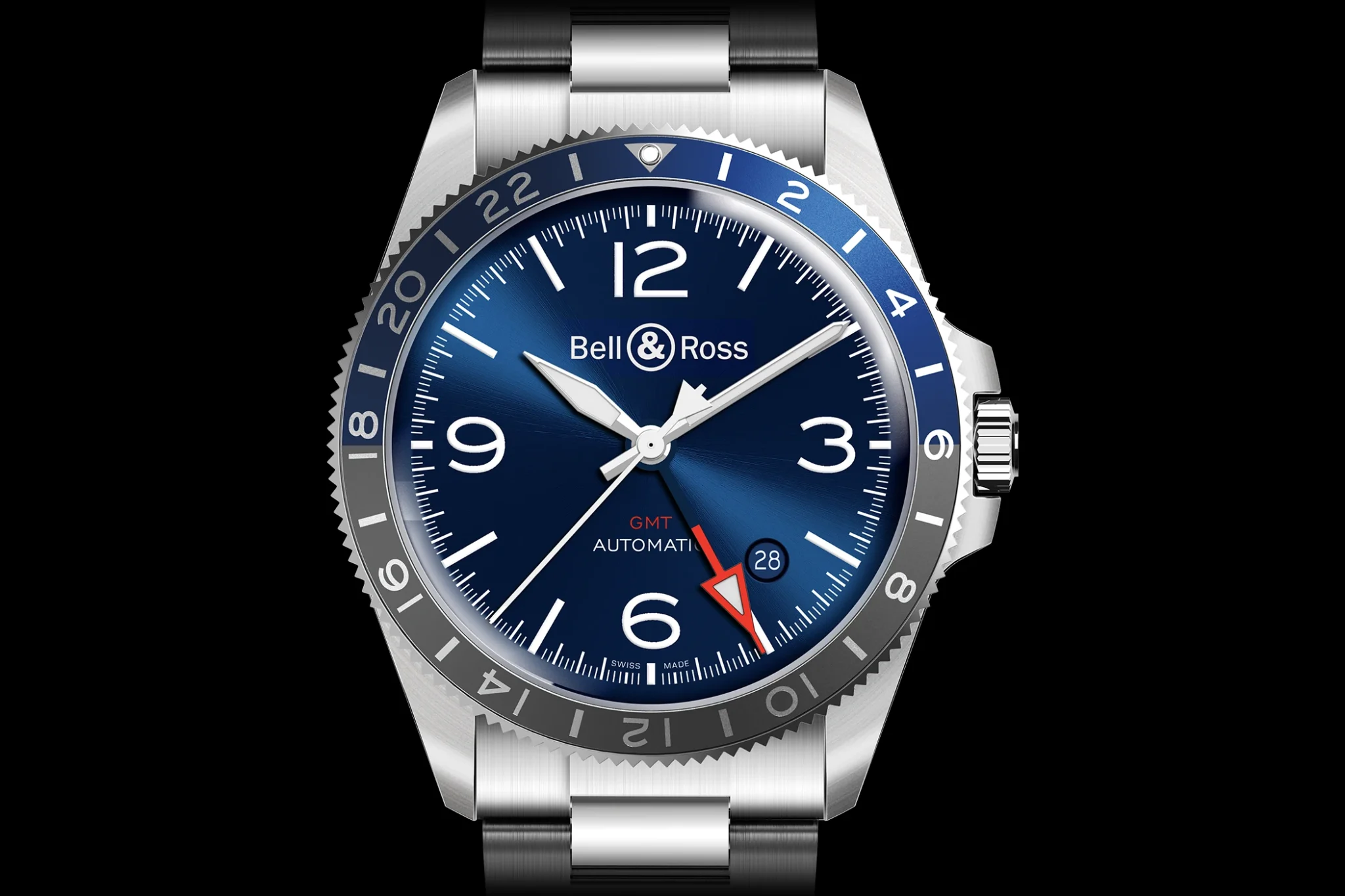
The GMT bezel
This brings us to another important feature of the GMT concept: the bezel. The 24-hour scale on the rehaut or bezel allows for distinguishing between daytime and nighttime hours and enables the setting of a second or third time zone. To help differentiate between day and night, many GMT bezels are two-tone and are usually rotatable in both directions.
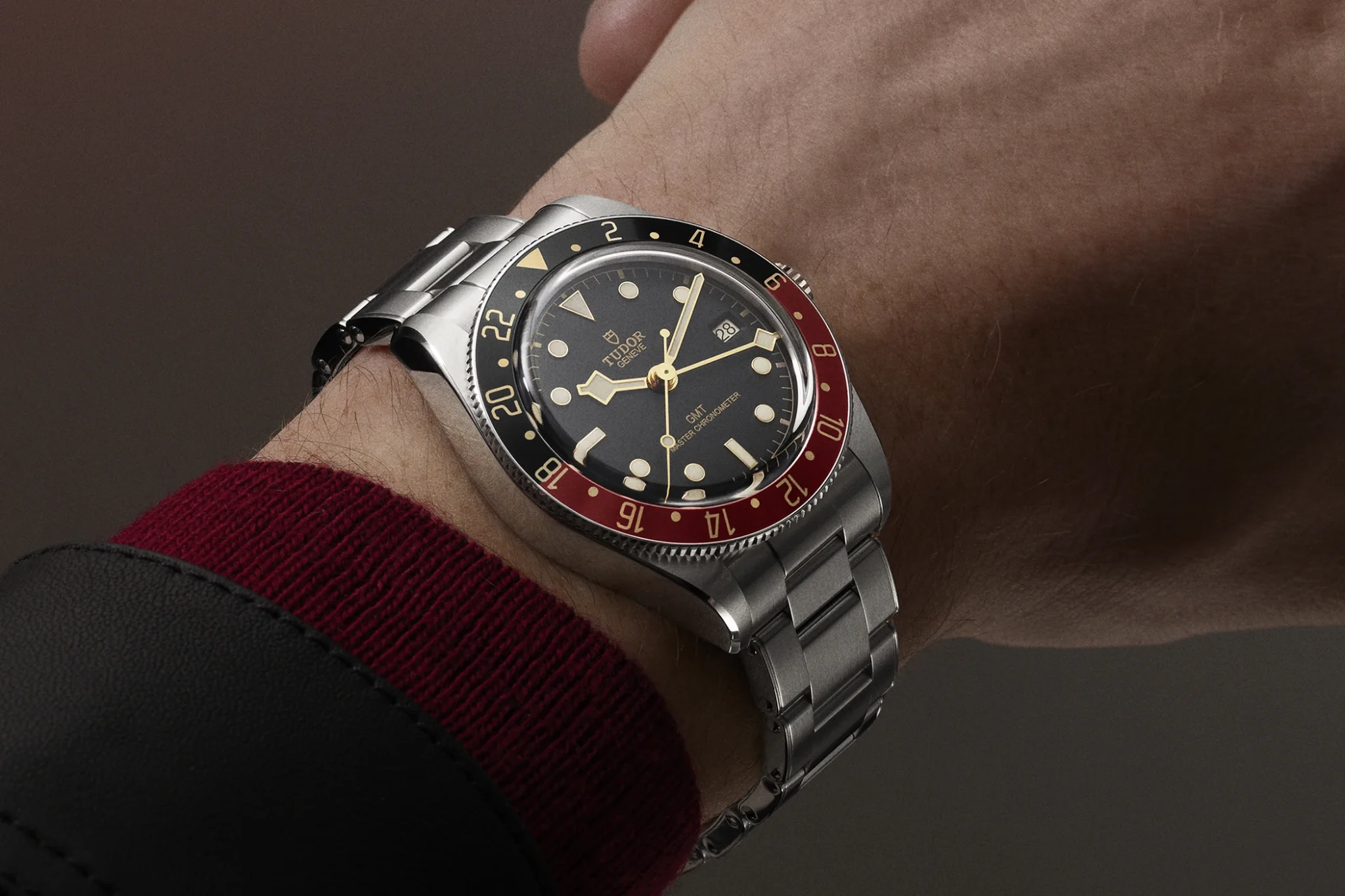
What is the difference between first- and second-generation GMT watches?
First-generation GMT Watches
One of the first watches to popularise the quick reading of a second time zone at a glance was the 1954 Rolex GMT Master. Originally designed as a time zone watch for the pilots of the American airline Pan Am, it quickly gained international acclaim. However, this watch’s functionality had a small drawback: the GMT hand moved along with the regular hour and minute hands when setting the time.
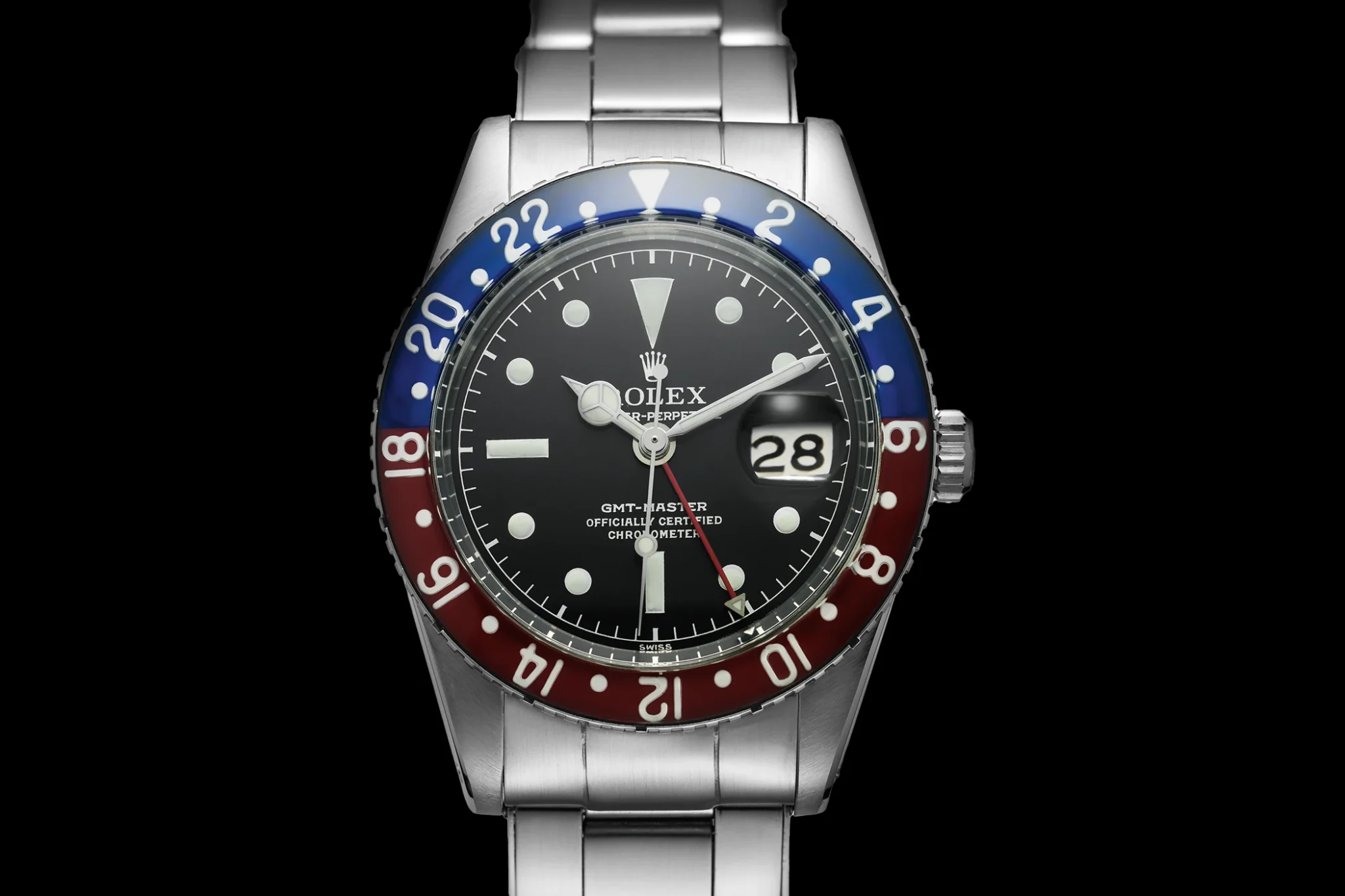
Second-generation GMT Watches
To address this issue, Rolex introduced the GMT Master II in 1982, marking the launch of the first ‘true’ GMT watch. For the first time, it was possible to set a Rolex GMT watch using a more advanced concept: unlike the first-generation watches, the second-generation GMT watches allowed the regular hour and minute hands to be adjusted independently from the GMT hand – or vice versa – without the need to stop or completely reset the watch. Within second-generation GMT watches, there is further division into ‘Office’ GMT watches and ‘Traveller’ GMT watches, which we will now explore in more detail.
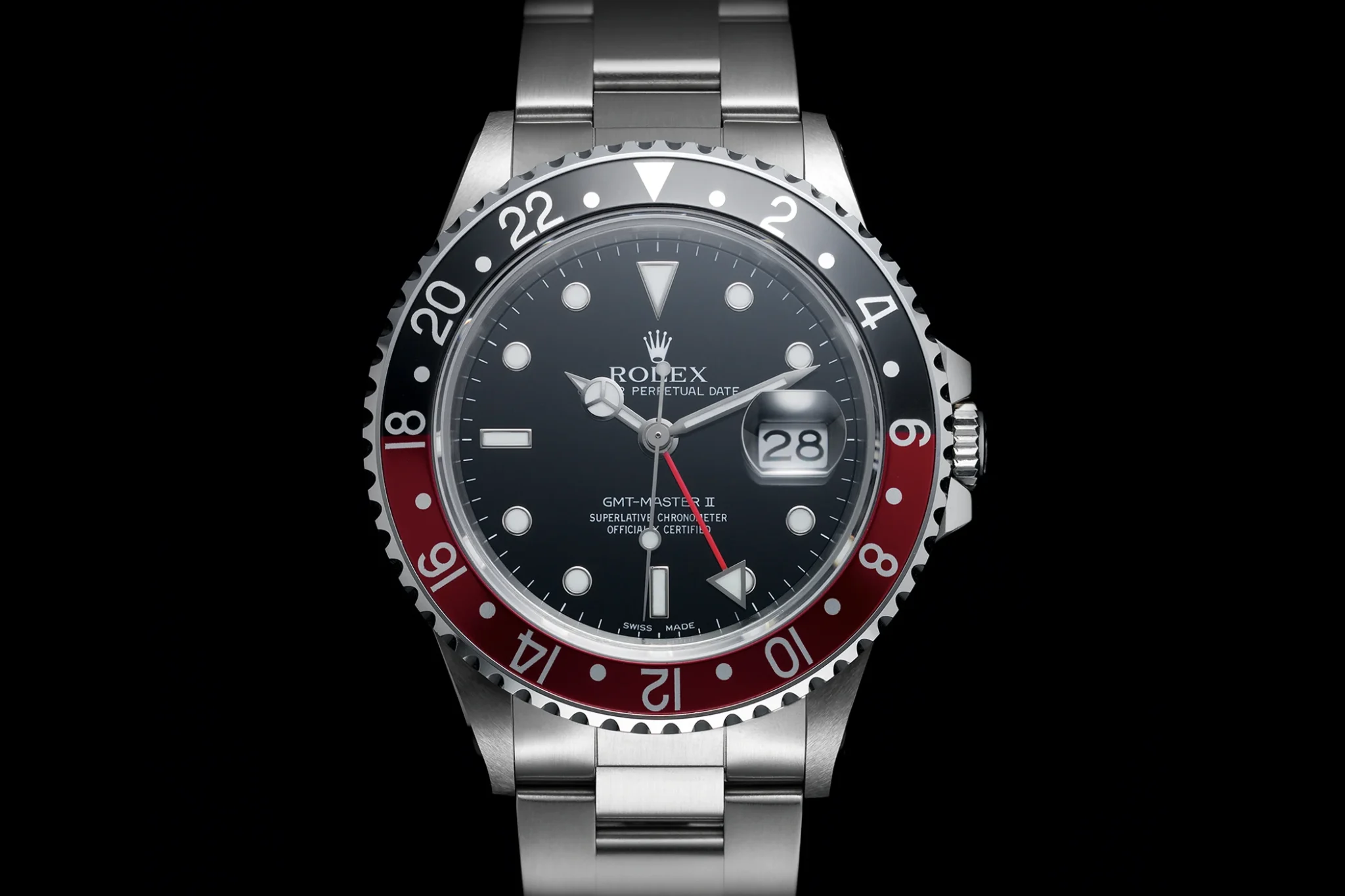
‘Office’ or ‘Traveller’ GMT watches
To understand the difference between the most common models of second-generation GMT watches, let’s take Breitling’s Chronomat and the Rolex GMT-Master II as examples. At first glance, both watches appear to function similarly, yet one is an ‘Office’ GMT watch, and the other is a ‘Traveller’ GMT watch. The difference becomes apparent only when you take a closer look at the construction of the movements and how the hands can be adjusted.
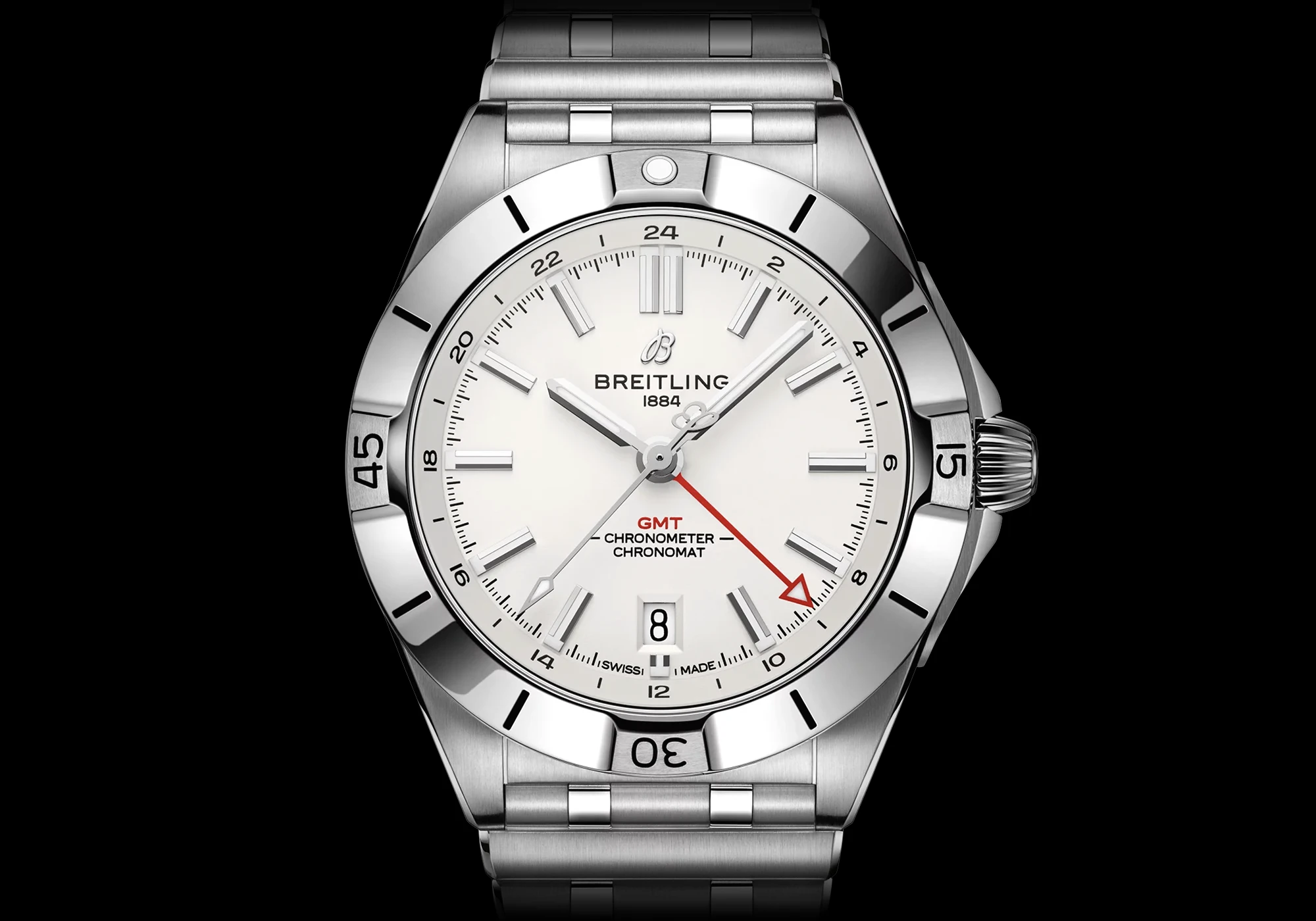
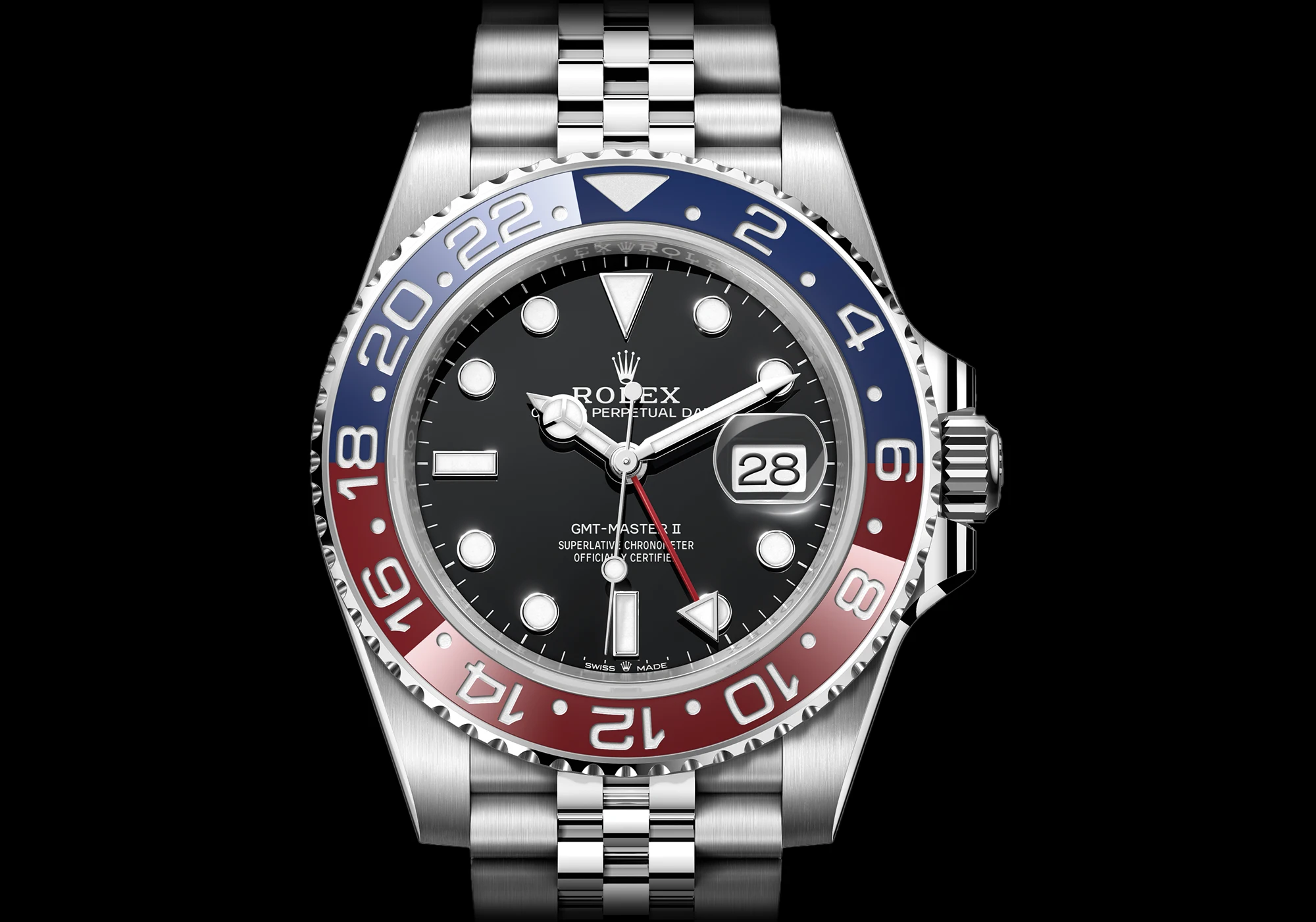
How to set and read an ‘Office’ GMT watch
The Breitling Chronomat is a so-called ‘Office’ GMT watch. Its second crown position allows the independent adjustment of the GMT hand in one direction, while the other direction changes the date. The regular hands, which display the local time, remain unaffected in this crown position. In the next crown position, where the regular hands are adjusted, the GMT hand moves with them. To set a second time zone, you simply align the GMT hand with the 24-hour scale on the bezel or rehaut. These watches are designed for people who live in a fixed time zone but frequently work with or communicate across other time zones.
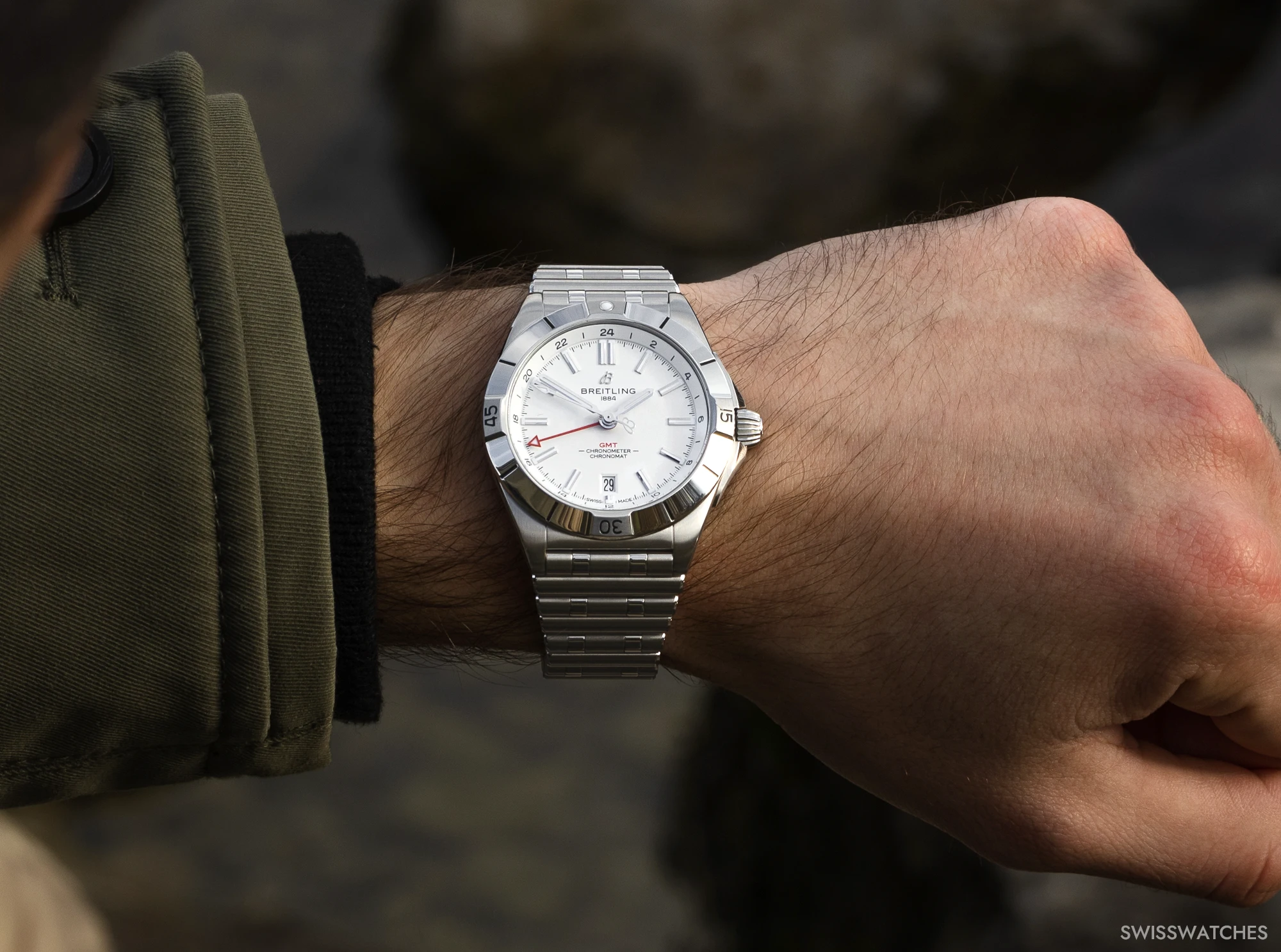
If you want to display a third time zone, you need to use the inner hour markers on the dial or the 24-hour scale located on the rehaut of many GMT watches. If the GMT watch only has regular 12-hour markers, you will need to multiply these values by two, as the GMT hand completes a full rotation in 24 hours, not 12. For the third time zone, you then just align the rotating bezel so that the desired time on the 24-hour scale matches the GMT hand.
How to set and read a ‘Traveller’ GMT watch
The ‘Traveller’ GMT has the advantage of allowing the regular hour hand to be adjusted independently of the GMT hand in the second crown position, without needing to stop or completely reset the watch. This makes it ideal for travellers who want to keep their home time visible with the GMT hand, while quickly adjusting their local time. This is why watches with this function are referred to as ‘Traveller GMT watches’. An example of a ‘Traveller’ GMT watch, in addition to the previously mentioned Rolex GMT-Master II, is the Longines Spirit Zulu Time.
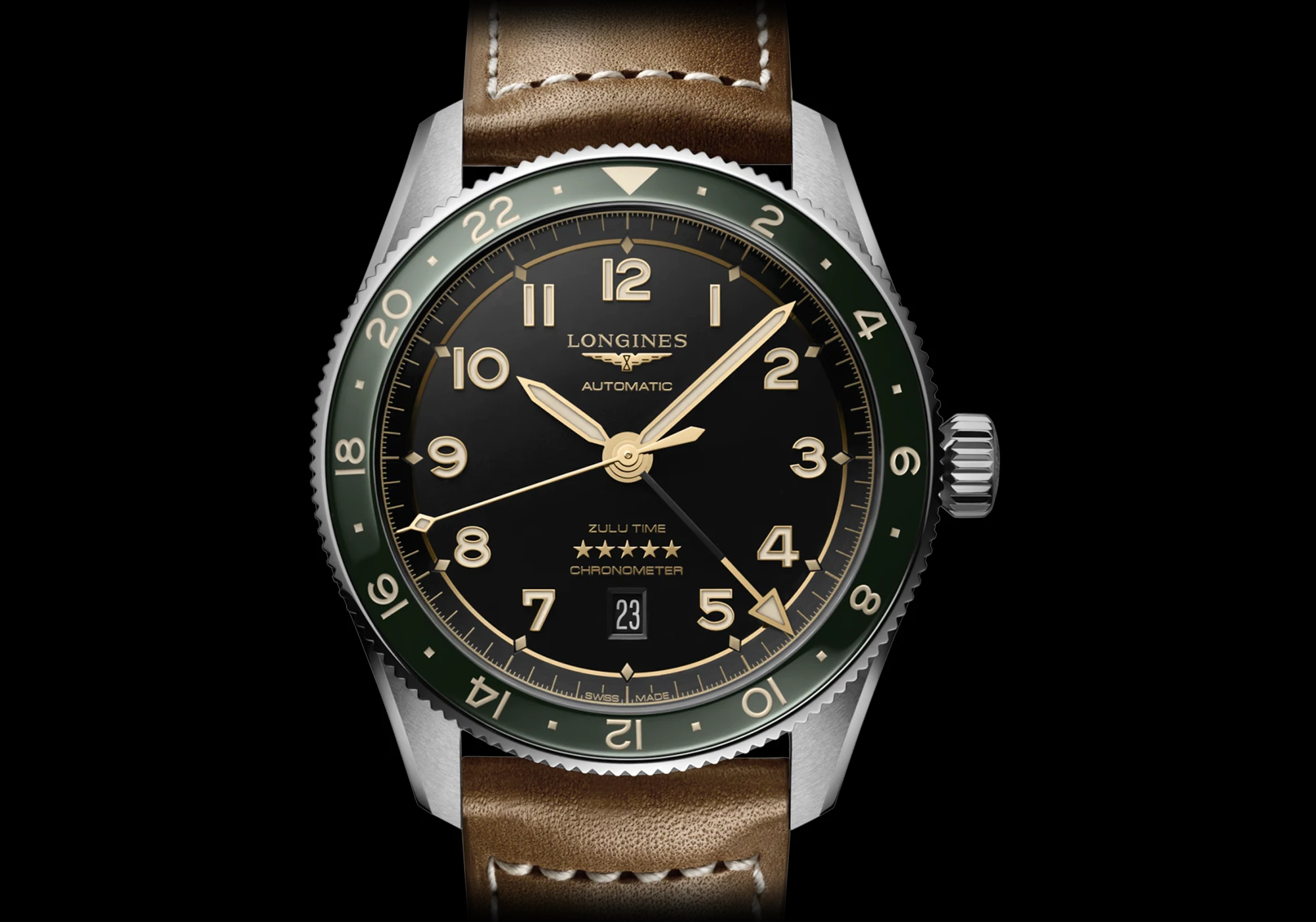
To set the GMT-Master II for quick recognition of the times in New York and Germany, follow this example: first, rotate the bezel so that the triangle on the bezel lines up with the 12 o’clock index on the dial. Then, unscrew the crown and pull it out to the third position –this is indicated by the fact that the second hand no longer moves – to set the GMT hand to your home time. As long as you’re at your reference location, the local time (hour hand) will be the same as the reference time (GMT hand).
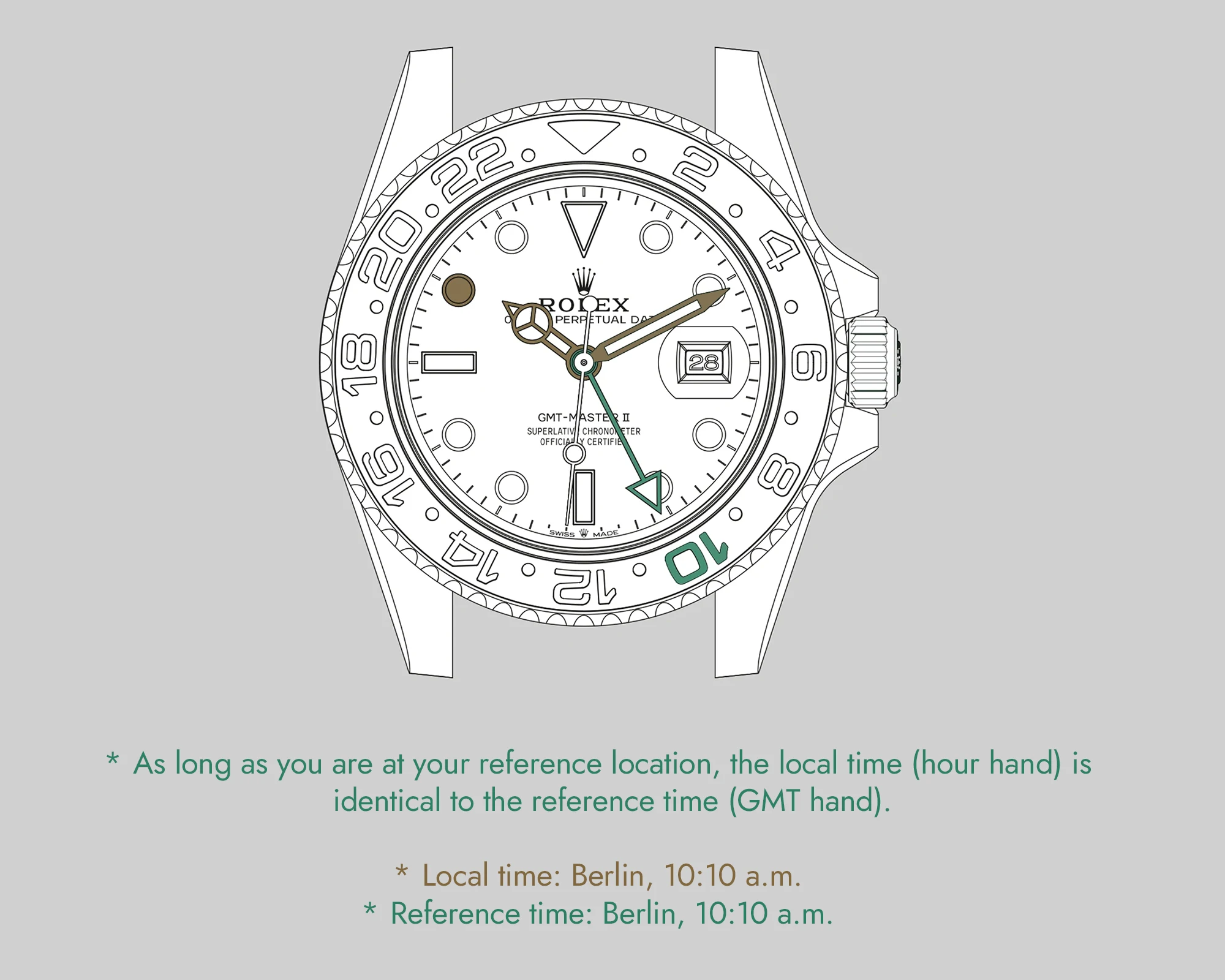
If you land in New York at 04:10 AM, adjust the local time, i.e., the hour hand, to 04:10 AM using the second crown position. The GMT hand, unaffected by this setting, remains unchanged and shows 10:10 AM, which corresponds to your home time in Germany. This allows you to read both local time and home time simultaneously.
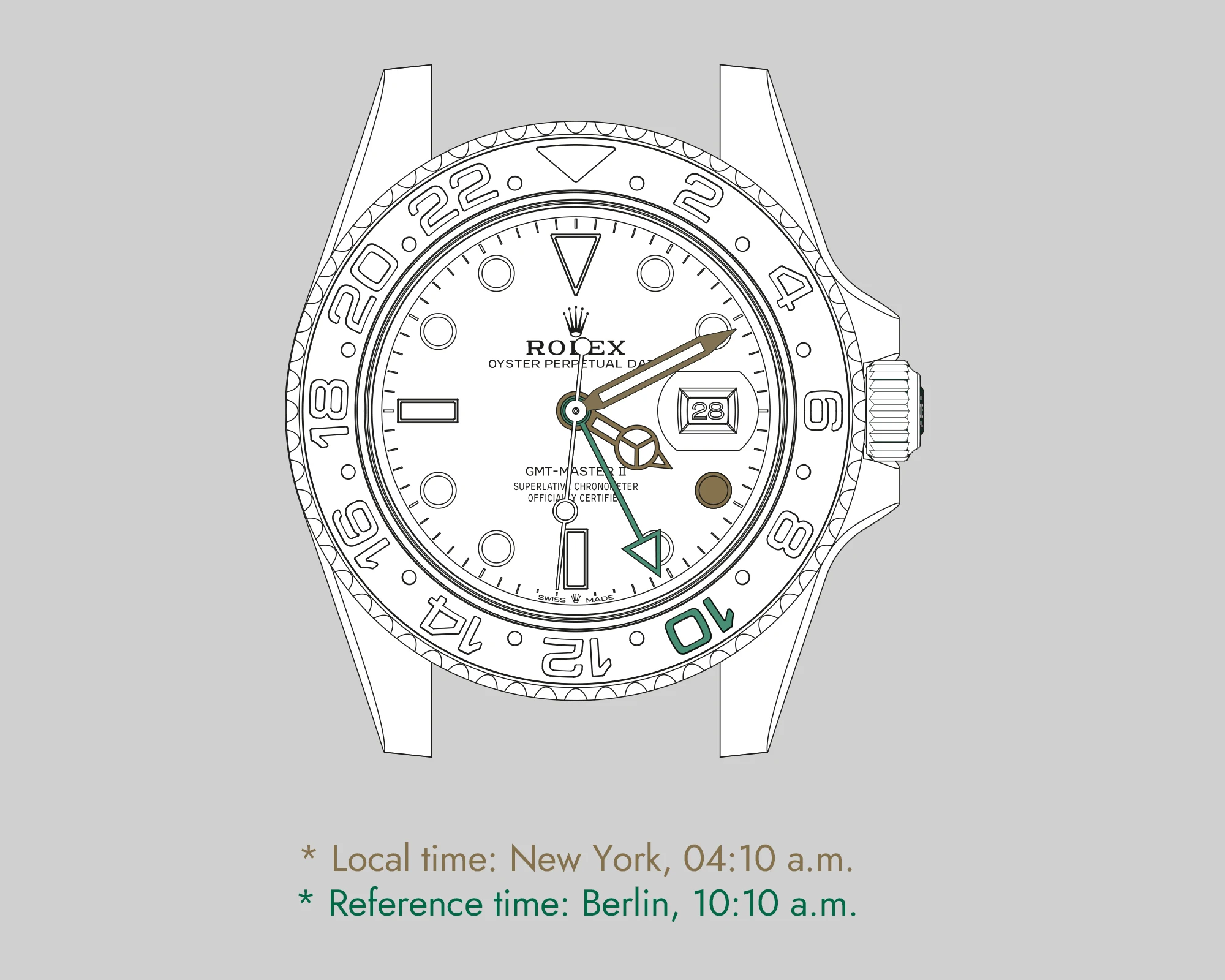
If you wish to display a third time zone, such as Tokyo, where it’s currently 6:10 PM, adjust the rotating GMT bezel so that the GMT hand points to 18:10 on the 24-hour scale. For the second time zone (home time), you would again observe the inner hour markers and multiply by two, or use the 24-hour scale on the rehaut if available.
